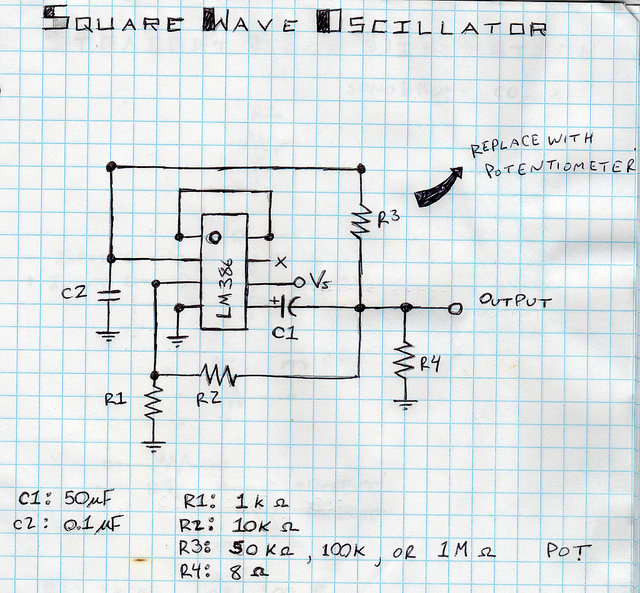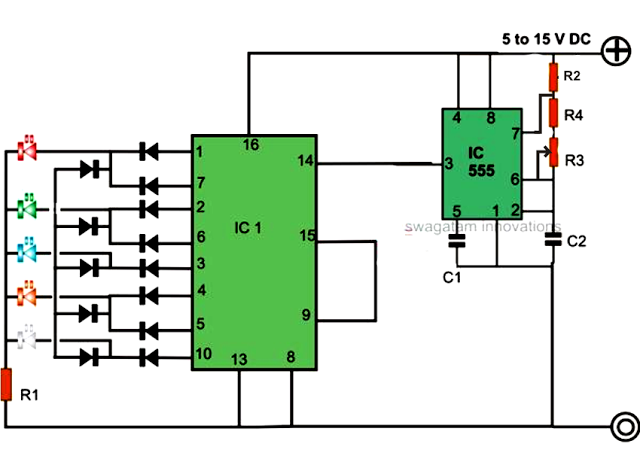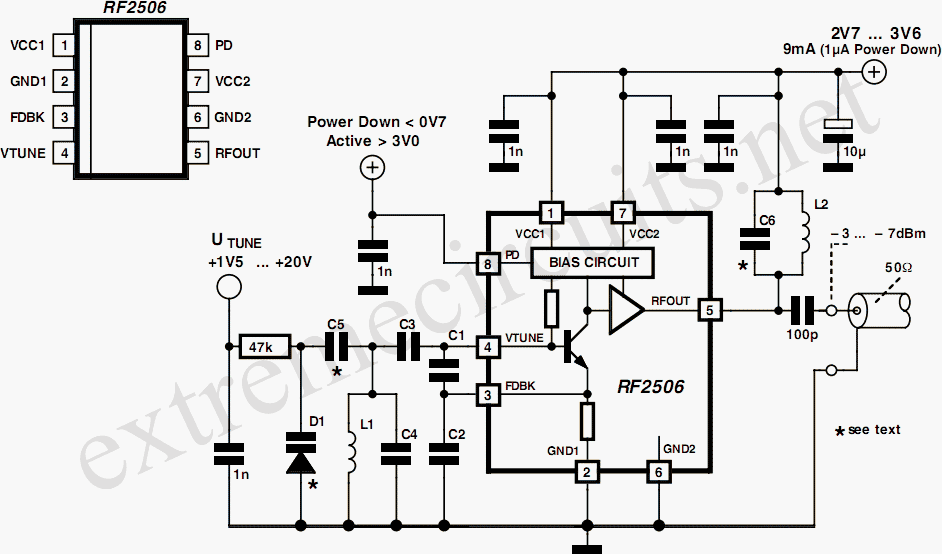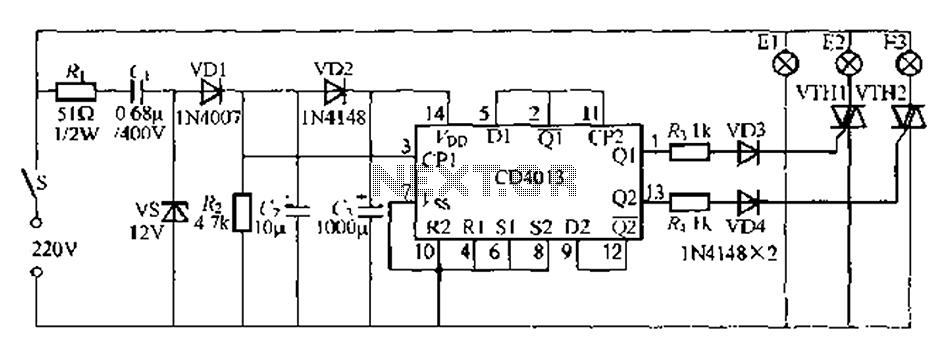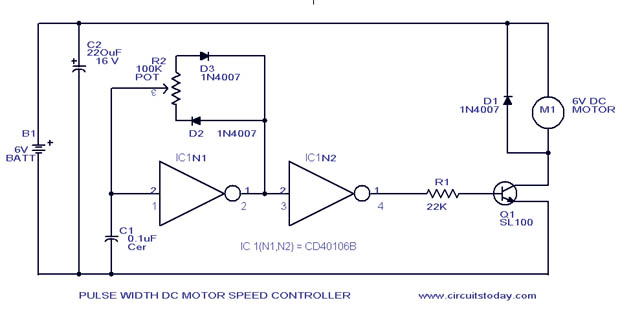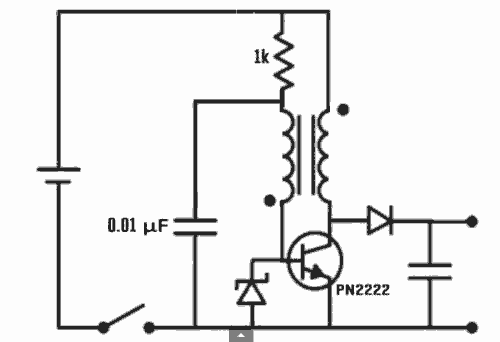
Crystal Tester Circuit
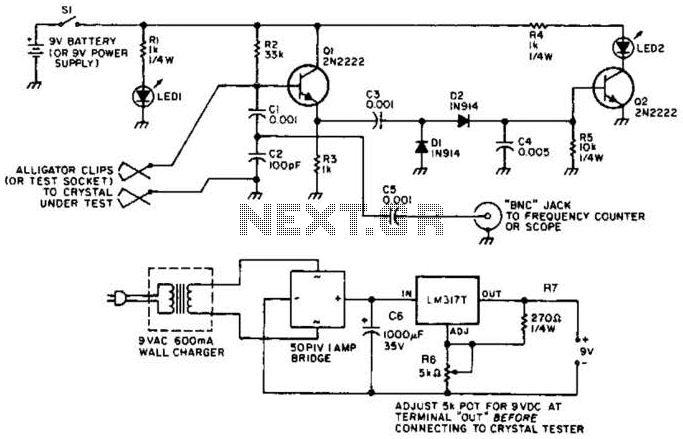
Q1 functions as a Colpitts crystal oscillator. If the crystal being tested is operational, the RF signal is rectified by diodes D1 and D2, which activates Q2 and illuminates indicator LED2. Additionally, LED1 serves as a power indicator.
The circuit utilizes a Colpitts oscillator configuration, which is known for its stability and simplicity in generating high-frequency signals. Q1 is typically a transistor or an operational amplifier configured to create the necessary oscillation. The oscillation frequency is determined by the crystal under test, which is connected to the feedback network of the oscillator.
When the crystal is functional, it resonates at its designated frequency, generating an RF signal. This signal is then passed through rectifying diodes D1 and D2, which convert the alternating current (AC) RF signal into a direct current (DC) signal. The rectification process is crucial for powering subsequent components in the circuit.
The rectified signal is used to bias transistor Q2. When the voltage across Q2 reaches a certain threshold, it turns on, allowing current to flow through to LED2. This LED serves as an operational indicator, signaling that the crystal is functioning correctly by lighting up when Q2 is activated.
LED1 is included in the circuit as a power indicator, providing a visual cue that the circuit is powered and operational. Both LEDs are typically low-current devices, ensuring minimal power consumption while providing essential feedback to the user regarding the status of the circuit.
Overall, this circuit design exemplifies a straightforward method for testing crystal oscillators, integrating visual indicators to enhance usability and feedback for users. Ql acts as a Colpitis crystal oscillator, and if the crystal under test is operational, the RF signal is rectified by D1 and D2, turning on Q2 and lighting indicator LED2. LED1 is a power indicator.
The circuit utilizes a Colpitts oscillator configuration, which is known for its stability and simplicity in generating high-frequency signals. Q1 is typically a transistor or an operational amplifier configured to create the necessary oscillation. The oscillation frequency is determined by the crystal under test, which is connected to the feedback network of the oscillator.
When the crystal is functional, it resonates at its designated frequency, generating an RF signal. This signal is then passed through rectifying diodes D1 and D2, which convert the alternating current (AC) RF signal into a direct current (DC) signal. The rectification process is crucial for powering subsequent components in the circuit.
The rectified signal is used to bias transistor Q2. When the voltage across Q2 reaches a certain threshold, it turns on, allowing current to flow through to LED2. This LED serves as an operational indicator, signaling that the crystal is functioning correctly by lighting up when Q2 is activated.
LED1 is included in the circuit as a power indicator, providing a visual cue that the circuit is powered and operational. Both LEDs are typically low-current devices, ensuring minimal power consumption while providing essential feedback to the user regarding the status of the circuit.
Overall, this circuit design exemplifies a straightforward method for testing crystal oscillators, integrating visual indicators to enhance usability and feedback for users. Ql acts as a Colpitis crystal oscillator, and if the crystal under test is operational, the RF signal is rectified by D1 and D2, turning on Q2 and lighting indicator LED2. LED1 is a power indicator.
